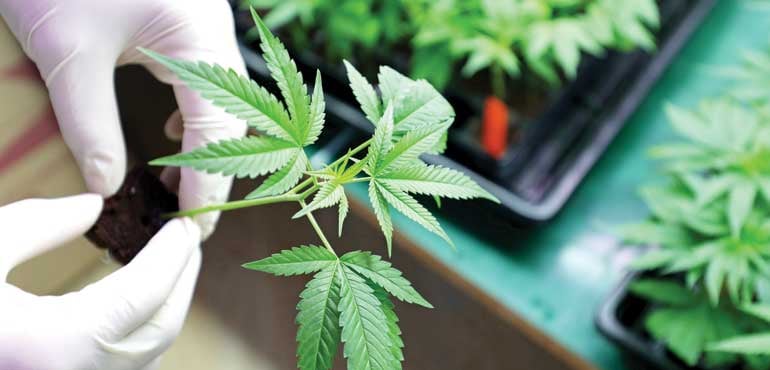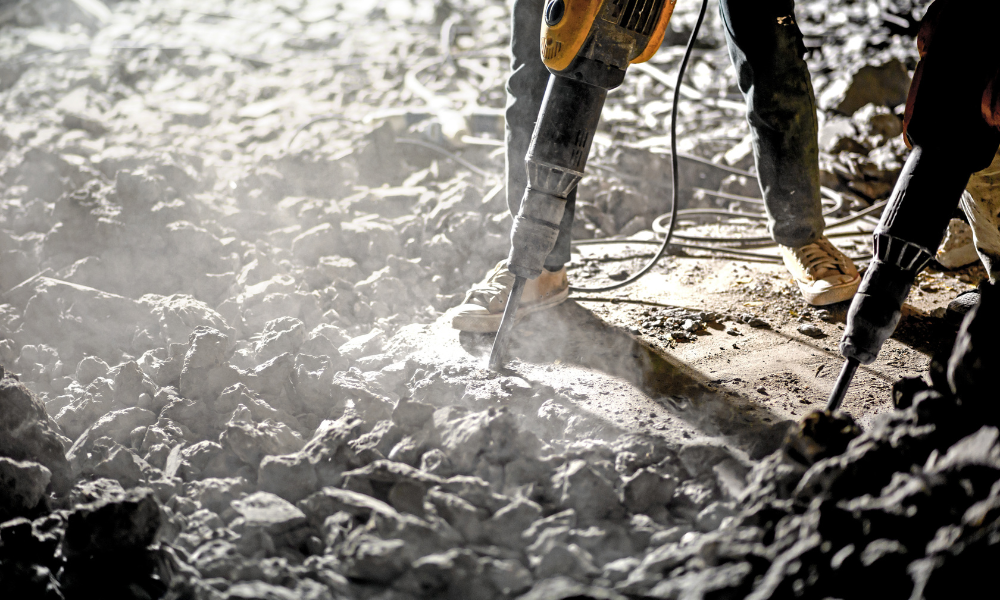Keeping you safe during cannabis manufacturing, growing and processing operations

With the forthcoming legalization of cannabis manufacturing, growing and processing operations by the Canadian government, licensed operators and workers in cannabis manufacturing operations will need to obey relevant health and safety laws to protect themselves from exposure hazards that could cause immediate and long-term health effects. Do you know how to keep yourself safe from the occupational risks in cannabis-growing operations?
We do.
That’s why we’ve spent decades giving you the information that you need to spot potential risks while improving respiratory protection products that help keep you out of harm’s way. Here’s an overview of what workers need to know to reduce their exposure and minimize immediate and long-term health effects associated with the growing, harvesting and manufacturing of cannabis.
What is cannabis?
Cannabis is a greenish-grey mixture of the dried flowers of the cannabis sativa plant. The main psychoactive chemical in cannabis is delta-9-tetrahydrocannabinol (THC), which is responsible for its intoxicating effects. This chemical is found in the resin produced by the leaves and buds of the cannabis plant. The plant also contains more than 500 other chemicals, including over 100 compounds that are chemically related to THC called cannabinoids.
Cannabis can be inhaled by smoking hand-rolled cigarettes called joints, in pipes or water pipes called bongs, or in blunts (cannabis rolled in cigar wraps). It can also be ingested through brewed tea or mixed into foods called edibles, such as brownies, cookies or candies.
How could it affect me?
The Canadian federal government introduced a suite of legislation on April 13, 2017, that, once passed, will establish a “strict legal framework” for the production, sale, distribution and possession of cannabis. Provinces, territories and municipalities will be able to tailor rules for their own jurisdictions and set their permits or licenses for growing, distributing and retail sales of cannabis. It’s expected that this legislation will be passed and enacted in June 2018. This means that workers who take part in cannabis growing, harvesting and manufacturing could be exposed to numerous health and safety risks and would now be covered by the applicable occupational health and safety regulations.
When am I at risk?
Workers who take part in the growing, harvesting and manufacturing of cannabis have the potential to be exposed to the following health risks:
- Mould exposures in indoor growing and harvesting operations
- Drug exposure to THC while handling plant buds, which can occur through inhalation, eye or dermal contact
- Exposures to pesticides and fertilizers
- Excessive carbon dioxide (CO2) exposure in greenhouses with optimized growing environments, i.e., CO2 is being added to the environment to promote plant growth
- Accidental carbon monoxide (CO) and oxides of nitrogen (NOx) exposure from CO2 producing devices, i.e., in order to raise CO2 concentrations some companies may direct products of incomplete combustion, which can include CO2, into the plant grow areas
- Excessive ultraviolet (UV) exposure from grow lamps
- Heat stress in outdoor growing operations
Other safety risks in cannabis-growing operations can include electrical shock and/or cuts, pinches and sprains suffered during harvesting or processing operations.
What can I do to protect myself?
Reduce exposures to mould, pesticides and other chemicals
Proper respiratory protection should be used during normal growing and harvesting operations to reduce potentially harmful exposure to mould, pesticides and other chemicals. Respiratory protection selection and use should be based on results of air monitoring, in compliance with the assigned protection factors (APFs) outlined in the CSA Z94.4 standard or other published selection documents that the province follows (such as NIOSH & USA OSHA). Based on the employer’s exposure assessment, an N-95 or P-100 disposable respirator, or half-face piece or full-face piece respirator with a combination organic vapour cartridge/P100 filter, may provide appropriate protection.
Maintain proper ventilation
This will help avoid overexposure to gases such as carbon monoxide, carbon dioxide and nitrous oxides as air purifying respirators will not provide protection against these three gases. Overexposure to these gases remains an acute concern if CO2 producing devices are not monitored or maintained properly in the manufacturing operation.
Protect eyes from contact with THC, pesticides and other chemicals
Employers should consider the need for protective eyewear, protective eyewear with a face shield, or a full-facepiece respirator. If workers are not required to wear a full-facepiece respirator for pesticide spraying, we suggest indirect venting goggles (e.g. 3M™ Goggle Gear, 500-Series with Clear Scotchgard™ Anti-fog Lens).
Prevent skin contact with THC during cutting and harvesting operations
This will help reduce the risk of dermal exposure to THC, pesticides and fertilizers. Protective coveralls, lab coats, aprons, footwear, and especially gloves should be considered during cutting and harvesting operations, and during the application of pesticides or fertilizing chemicals. In outdoor operations, the potential for increased risk of heat stress should be considered when selecting workers’ protective clothing.






